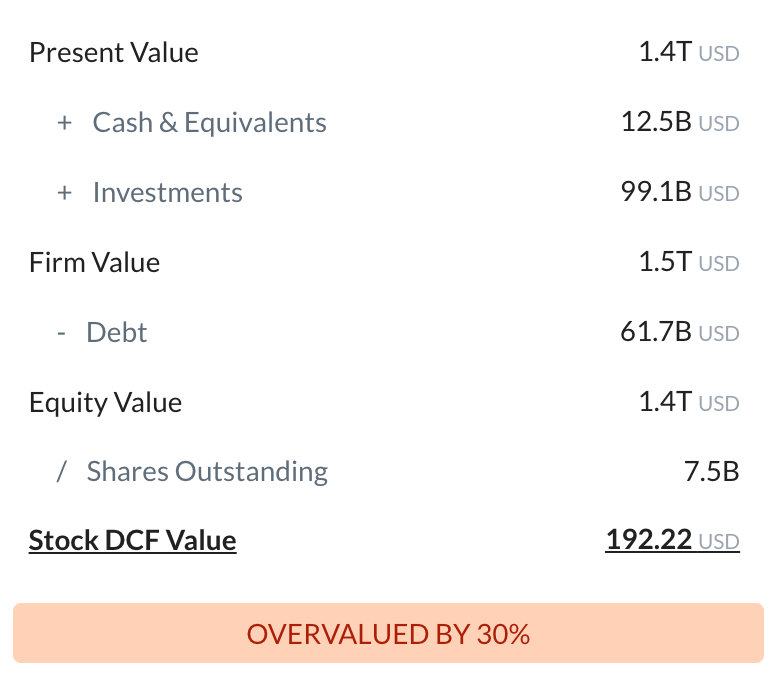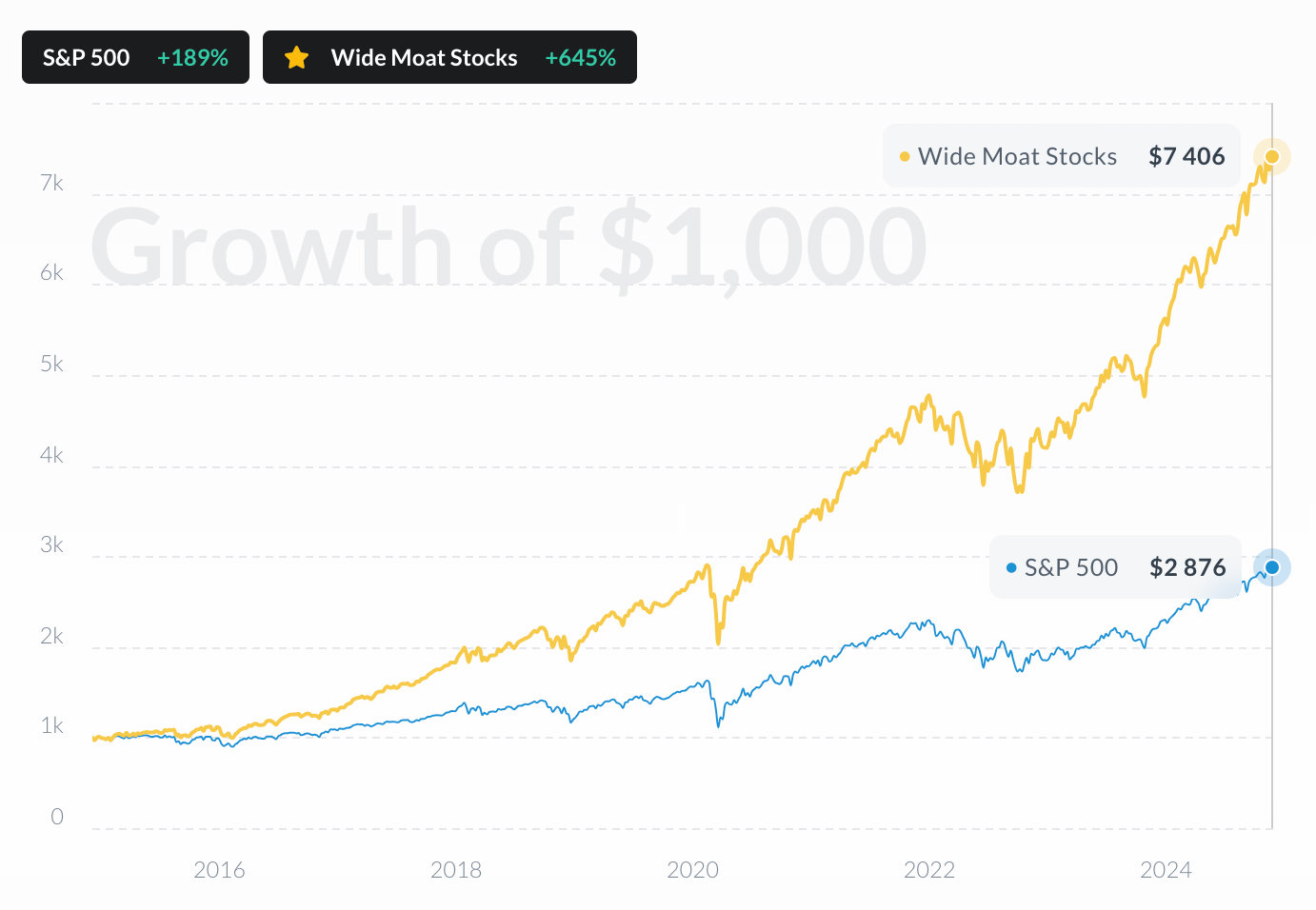
Amazon.com Inc
NASDAQ:AMZN


| US |

|
Johnson & Johnson
NYSE:JNJ
|
Pharmaceuticals
|
| US |

|
Berkshire Hathaway Inc
NYSE:BRK.A
|
Financial Services
|
| US |

|
Bank of America Corp
NYSE:BAC
|
Banking
|
| US |

|
Mastercard Inc
NYSE:MA
|
Technology
|
| US |

|
UnitedHealth Group Inc
NYSE:UNH
|
Health Care
|
| US |

|
Exxon Mobil Corp
NYSE:XOM
|
Energy
|
| US |

|
Pfizer Inc
NYSE:PFE
|
Pharmaceuticals
|
| US |

|
Palantir Technologies Inc
NYSE:PLTR
|
Technology
|
| US |

|
Nike Inc
NYSE:NKE
|
Textiles, Apparel & Luxury Goods
|
| US |

|
Visa Inc
NYSE:V
|
Technology
|
| CN |

|
Alibaba Group Holding Ltd
NYSE:BABA
|
Retail
|
| US |

|
JPMorgan Chase & Co
NYSE:JPM
|
Banking
|
| US |

|
Coca-Cola Co
NYSE:KO
|
Beverages
|
| US |

|
Walmart Inc
NYSE:WMT
|
Retail
|
| US |

|
Verizon Communications Inc
NYSE:VZ
|
Telecommunication
|
| US |

|
Chevron Corp
NYSE:CVX
|
Energy
|
Utilize notes to systematically review your investment decisions. By reflecting on past outcomes, you can discern effective strategies and identify those that underperformed. This continuous feedback loop enables you to adapt and refine your approach, optimizing for future success.
Each note serves as a learning point, offering insights into your decision-making processes. Over time, you'll accumulate a personalized database of knowledge, enhancing your ability to make informed decisions quickly and effectively.
With a comprehensive record of your investment history at your fingertips, you can compare current opportunities against past experiences. This not only bolsters your confidence but also ensures that each decision is grounded in a well-documented rationale.
Do you really want to delete this note?
This action cannot be undone.

| 52 Week Range |
167.32
254
|
| Price Target |
|
We'll email you a reminder when the closing price reaches USD.
Choose the stock you wish to monitor with a price alert.

|
Johnson & Johnson
NYSE:JNJ
|
US |

|
Berkshire Hathaway Inc
NYSE:BRK.A
|
US |

|
Bank of America Corp
NYSE:BAC
|
US |

|
Mastercard Inc
NYSE:MA
|
US |

|
UnitedHealth Group Inc
NYSE:UNH
|
US |

|
Exxon Mobil Corp
NYSE:XOM
|
US |

|
Pfizer Inc
NYSE:PFE
|
US |

|
Palantir Technologies Inc
NYSE:PLTR
|
US |

|
Nike Inc
NYSE:NKE
|
US |

|
Visa Inc
NYSE:V
|
US |

|
Alibaba Group Holding Ltd
NYSE:BABA
|
CN |

|
JPMorgan Chase & Co
NYSE:JPM
|
US |

|
Coca-Cola Co
NYSE:KO
|
US |

|
Walmart Inc
NYSE:WMT
|
US |

|
Verizon Communications Inc
NYSE:VZ
|
US |

|
Chevron Corp
NYSE:CVX
|
US |
This alert will be permanently deleted.
Intrinsic Value
The intrinsic value of one
 AMZN
stock under the Base Case scenario is
172.52
USD.
Compared to the current market price of 229.11 USD,
Amazon.com Inc
is
Overvalued by 25%.
AMZN
stock under the Base Case scenario is
172.52
USD.
Compared to the current market price of 229.11 USD,
Amazon.com Inc
is
Overvalued by 25%.
The Intrinsic Value is calculated as the average of DCF and Relative values:

Let our AI compare Alpha Spread’s intrinsic value with external valuations from Simply Wall St, GuruFocus, ValueInvesting.io, Seeking Alpha, and others.
Let our AI break down the key assumptions behind the intrinsic value calculation for Amazon.com Inc.
| ZA |
N
|
Naspers Ltd
JSE:NPN
|
|
| CN |

|
Alibaba Group Holding Ltd
NYSE:BABA
|
|
| CN |

|
PDD Holdings Inc
NASDAQ:PDD
|
|
| NL |

|
Prosus NV
AEX:PRX
|
|
| AR |

|
Mercadolibre Inc
NASDAQ:MELI
|
|
| UY |

|
MercadoLibre Inc
BMV:MELIN
|
|
| US |
D
|
DoorDash Inc
NASDAQ:DASH
|
|
| CN |

|
Meituan
HKEX:3690
|
|
| KR |

|
Coupang Inc
NYSE:CPNG
|
|
| CN |

|
JD.Com Inc
HKEX:9618
|
Fundamental Analysis
Select up to 3 indicators:
Select up to 3 indicators:
A slowdown in AWS revenue growth combined with persistently thin margins in the retail segment may suppress overall profitability, undermining Amazon’s ability to fund strategic ventures.
Ongoing antitrust scrutiny and regulatory actions targeting the company’s e-commerce dominance raise the possibility of structural changes or forced breakups, which could dilute its competitive advantages.
Rising labor costs, supply chain disruptions, and potential unionization efforts threaten to escalate operating expenses, erode cost efficiencies, and shift management focus away from innovation.
Amazon Web Services continues to be a high-margin, market-leading cloud platform, providing a crucial profit engine that funds reinvestment across the entire organization.
The Prime membership ecosystem propels customer loyalty and recurring revenue streams, enabling Amazon to leverage cross-selling opportunities and maintain strong market share in online retail.
Strategic expansions into advertising, healthcare, and digital content broaden the company’s revenue base, harnessing both new growth drivers and synergies with existing lines of business.
Revenue & Expenses Breakdown
Amazon.com Inc

Balance Sheet Decomposition
Amazon.com Inc

| Current Assets | 196.9B |
| Cash & Short-Term Investments | 94.2B |
| Receivables | 61.2B |
| Other Current Assets | 41.5B |
| Non-Current Assets | 531.1B |
| PP&E | 407.9B |
| Intangibles | 23.3B |
| Other Non-Current Assets | 99.9B |
| Current Liabilities | 195.2B |
| Accounts Payable | 106B |
| Accrued Liabilities | 68.1B |
| Other Current Liabilities | 21.1B |
| Non-Current Liabilities | 163.1B |
| Long-Term Debt | 50.7B |
| Other Non-Current Liabilities | 112.4B |
Free Cash Flow Analysis
Amazon.com Inc

| USD | |
| Free Cash Flow | USD |
Earnings Waterfall
Amazon.com Inc

|
Revenue
|
691.3B
USD
|
|
Cost of Revenue
|
-345.3B
USD
|
|
Gross Profit
|
346B
USD
|
|
Operating Expenses
|
-269.8B
USD
|
|
Operating Income
|
76.2B
USD
|
|
Other Expenses
|
281m
USD
|
|
Net Income
|
76.5B
USD
|
AMZN Profitability Score
Profitability Due Diligence

Amazon.com Inc's profitability score is 57/100. The higher the profitability score, the more profitable the company is.

Score
Amazon.com Inc's profitability score is 57/100. The higher the profitability score, the more profitable the company is.
AMZN Solvency Score
Solvency Due Diligence

Amazon.com Inc's solvency score is 83/100. The higher the solvency score, the more solvent the company is.

Score
Amazon.com Inc's solvency score is 83/100. The higher the solvency score, the more solvent the company is.
Wall St
Price Targets
AMZN Price Targets Summary
Amazon.com Inc

According to Wall Street analysts, the average 1-year price target for
 AMZN
is 294.4 USD
with a low forecast of 229.37 USD and a high forecast of 369.46 USD.
AMZN
is 294.4 USD
with a low forecast of 229.37 USD and a high forecast of 369.46 USD.
Dividends

Current shareholder yield for  AMZN is
.
AMZN is
.
Shareholder yield represents the total return a company provides to its shareholders, calculated as the sum of dividend yield, buyback yield, and debt paydown yield. What is shareholder yield?

The intrinsic value of one
 AMZN
stock under the Base Case scenario is
172.52
USD.
AMZN
stock under the Base Case scenario is
172.52
USD.
Compared to the current market price of 229.11 USD,
 Amazon.com Inc
is
Overvalued by 25%.
Amazon.com Inc
is
Overvalued by 25%.























































